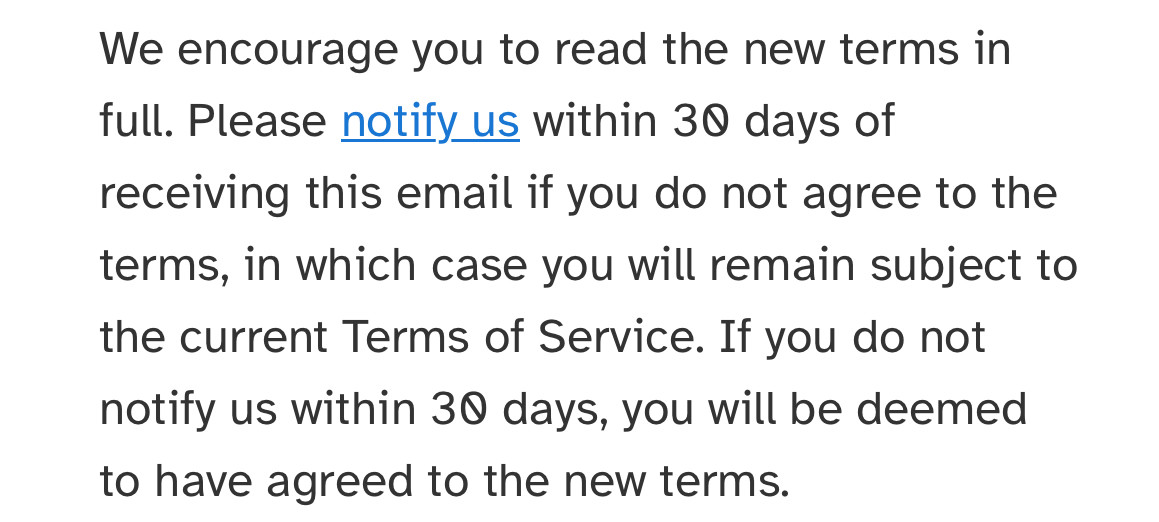23andMe just sent out an email trying to trick customers into accepting a TOS change that will prevent you from suing them after they literally lost your genome ro thieves.
Do what it says in the email and email arbitrationoptout@23andme.com that you do not agree with the new terms of service and opt out of arbitration.
If you have an account with them, do this right now.
Here’s an email template for what to write: https://www.patreon.com/posts/94164861
“They lost my genome” is certainly a 2023 phrase.
How is this a trick?
It is a legit question. Usually you don’t have to pro-actively inform anyone that you disagree with anything, TOS included. That’s just what companies want you to believe since it benefits them greatly.
No idea though how things in the U.S. are handled and if there are differences in certain states. It would surprise me though if that was actually an enforcable legal principle.
I feel like the TOS you are subject to is the one you signed when you first used the service. Unless you have been constantly using their service, I can’t see how a new TOS would affect you. I could be WAAY off here because IANAL, but a company can’t just retroactively change the TOS for customers without some kind of action taken by the customers under the new TOS.
IANAL too, buddy, IANAL too
I just LOVE that the standard acronym for a lack of legal license sounds like an Isaac Asimov porn parody 😆
Or a new Apple product… iAnal
The real question is why would you put your genome into the hands of a company without a compelling reason beyond “This sounds cool”
A lot of people didn’t, but their relatives did and now theyre implicated.
If my uncle did this, how would they get my information and genome over him? I read the Wikipedia article but still don’t understand how this works.
Because 25% of your uncles DNA is the same as yours.
Okay, but they don’t know which part and the don’t even know I exist if my uncle isn’t telling them?
They don’t, but other companies like insurance might know. And they are the ones who’s buying. They use multiple sources of data. And then they put 2 and 2 together.
Even though it’s 25%, they will still calculate it as a risk.
Thanks for putting it together, now I understand the reasoning.





